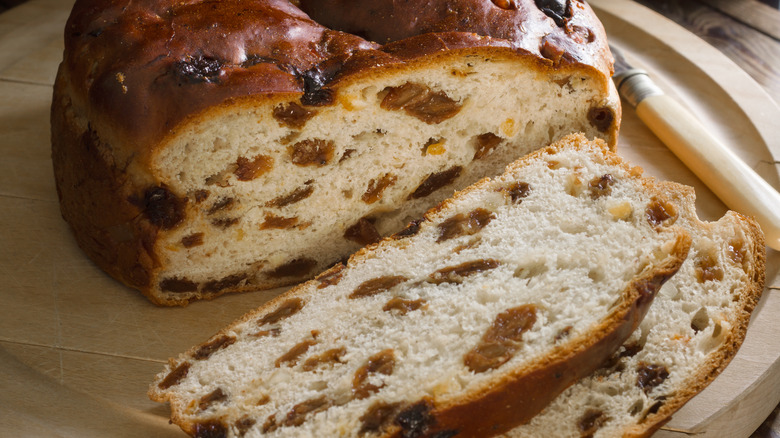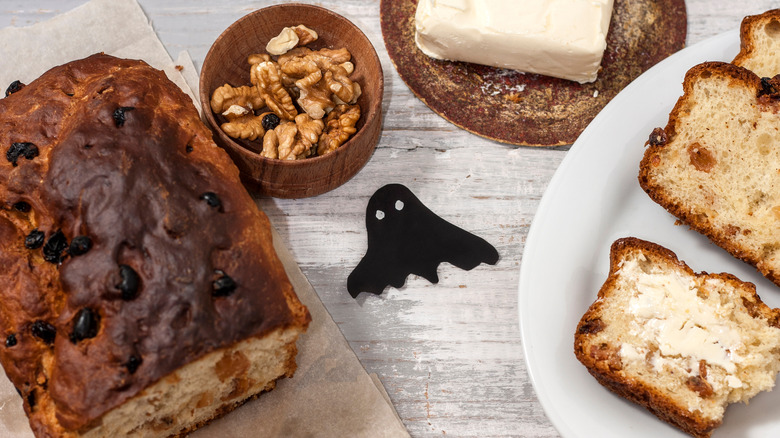Barmbrack: The Fruity Bread Eaten During Samhain
When All Hallows' Eve approaches, there are two roads that diverge in a yellow wood. One leads the modern way, which yields a parade of fun-sized Twix bars, animatronic skeletons, satin-cloaked vampires, and cackling witches on brooms. The other is a more chilling and darkly-lit path that goes all the way to Ireland. It may include recognizable characters like jack-'o-lanterns, wandering spirits, and black cats, but it was paved centuries before today's popular emblems of Halloween took their commercialized form. It goes by the name of Samhain, an ancient pagan festival steeped in Celtic tradition.
According to History, ancient Celts began celebrating the holiday on October 31 and November 1 to commemorate the harvest season and "usher in the dark half of the year." As one of the most revered of the four "fire festivals" that punctuated each season, ancient Samhain celebrations might have looked something like an Ari Aster movie. Rituals included lighting a giant fire from a wooden wheel, building altars to the dead, and sacrificing cows. While participation in Samhain is no longer compulsory (History writes that those who refused to partake in ancient times were subject to "punishment from the gods"), certain traditions still prevail in parts of Ireland. One of those traditions is barmbrack, a kind of bread specked with fruit.
Is that a wedding ring in your barmbrack loaf?
Despite the decidedly spooky elements of Samhain, the bread that's traditionally eaten during the holiday might be the least ghoulish part. Rather, barmbrack — a yeasted bread speckled with raisins, per a New York Times recipe inspired by Irish cookbook author Rachel Allen — was likely developed as a means of preserving fine fruits into the chillier seasons. "It's at this time of year you would start to save luxurious ingredients such as imported fruits," culinary expert Dr Máirtín Mac Con Iomaire told Aoife McElwain of The Irish Times. "These rich fruit cakes were a way of preserving raw ingredients, though brack doesn't last quite as long as a traditional Christmas cake."
While its name translates to "speckled bread," Independent.ie writes that the name of the sweet bread is taken from the yeast (or "barm") that's produced from fermented ale. The outlet notes that barmbrack is eaten throughout the year, but that, come Halloween, it may provide "fortune-telling significance for the year ahead." Sort of like finding a plastic figurine of baby Jesus in your king's cake on Mardi Gras, discovering a certain object in your Halloween barmbrack could portend a number of omens, both good and bad. If you get a coin, you might be getting rich. If you find a ring, you might be getting married. But if you get a cloth, you might be in for "bad luck and poverty." Luckily, though, commercially sold barmbrack only contains sweet raisins these days.

